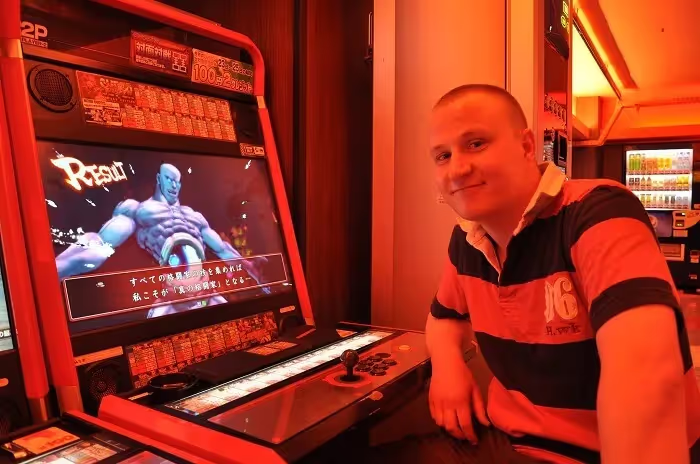Every sock you lose behind the bed, every lamp consigned to the loft, every instrument gathering dust in the study — they all have a purpose in Forgotton Anne. When they leave your memory, they appear in another world, animated and sentient, destined to live out the full life you never provided them. This simple premise provides the framework for a beautifully rendered game which is clearly inspired by output from the likes of master animator Studio Ghibli.

Forgotlings — for this is the name given to these discarded items — can move and speak in the city they’ve been transported to, thanks to the effects of anima. Overseeing them is a kindly gentleman named Master Bonku, who is working on creating an Ether Bridge to help all Forgotlings return to their original home. His ward Anne is an Enforcer, who wields the power to remove the anima from any Forgotling who steps out of place, turning them into the lifeless objects they previously were. Anne’s world is thrown into chaos when rebel Forgotlings initiate a series of attacks on the city which ultimately sparks a chain of events that calls everything she believes into question.
Despite their dubious usefulness, the animation and characterisation of the city’s inhabitants is such that you actually feel for their plight — both rebel and law-abiding Forgotling alike — which speaks volumes about their portrayal. The range of voice acting is staggering; almost every regional UK dialect is included, and while there is some hamminess at times, the majority of it is done well. A fully orchestrated score completes the soundscape, and nothing less would have sufficed — this is a product of sumptuous production which further enhances the reputation of the indie market, at least aesthetically.

For an outwardly cartoonish game, Forgotton Anne deals with a number of heavy themes. Fans of Orwell will find much to pore over and compare here, and while the direction many of the story threads take will be blatantly obvious from the outset, the subtler questions about the nature of the world and why it exists are not answered until later on. Anne herself is a hostile, unlikeable character for the first few hours, which makes playing as her something of a mixed bag. Games have often struggled to adequately portray shades of grey in their lead protagonists. Rather than fully explaining what makes them troubled or angry individuals, the player’s emotions are instead manipulated by the world around the character being altered — here is no different. Over the ten hours of gameplay, we never fully learn how Anne became the callous person she was up until the start of the game, only her journey onward from that point. While much of the narrative is affecting, there are still gaps here which prevent it from gelling into a fully satisfying story.

Even so, Forgotton Anne pulls no punches at times and the number of allegiance shifts, red herrings and rug pulls is admirable in a game as relatively small as this. Agency is given to the player to make life or death decisions about some of the Forgotlings she encounters, and those choices reverberate. They may just be talking objects but they deliver emotion in spades, and one scene in particular will hit home for anyone who has ever had a comforter. ThroughLine Games are also clearly fans of Chrono Trigger, given there are not one but two homages to its famous trial scene, the last being particularly devastating.
But while the story and presentation is superb, the gameplay underpinning Forgotton Anne leaves much to be desired. A platform-puzzle game at heart, it’s clear that far less time went into the design of both aspects of its genre than on the title’s overall look. For the majority of the running time you’ll be running up and down stairs and ladders, awkwardly jumping between platforms, and manipulating the flow of anima between machines in order to power up switches, doors and panels.

Let’s tackle the platforming first: it ranges from competent to maddening, sadly lingering closer to the latter for most of the game. Running and jumping are handled by different buttons, while a third input is needed to do an enhanced wing jump to reach further destinations. The issue here lies with the animation itself, since a frame delay when activating your wings will often prove to be the decisive factor in you successfully reaching a ledge, or plummeting to the ground to try again. You never die in Forgotton Anne, you simply have to go back and try again. This would be acceptable if you felt like you were to blame for the mistakes you made, but in most cases it’s actually the control system and its registering of button presses is at fault. And did we mention stairs? There are stairs. Lots and lots of stairs.

Puzzles are slightly less frustrating, but offer little in the way of serious challenge. Switching the flow of anima in conduits to activate different doors or levers is functional but never exciting, while the most complex head-scratchers are locks which need figuring out via a simplified Sokoban-style puzzle. Moving anima from crate to conduit to door panel continues to the very end, with a few annoying instances thrown in for good measure — such as sending you back to the same location three times to retrieve enough anima to complete a puzzle, for no obvious reason other than extending the playing time. In another scenario, one lift powered by anima returned to its original position immediately after removing it; a second lift later in the game exhibited different behaviour.

This lack of consistency and issues with game design almost undoes everything Forgotton Anne works so hard to achieve. There is a genuine lack of signposting in the game, whether it’s a clear indication of your next objective, a reason for completing a particular puzzle, or — most commonly — a failure to distinguish between the painterly backdrops and the actual game environment. In a 2.5D setting, even with the mash-up of European and Asian animation and compositing which the game revels in, it fails repeatedly to highlight its exits. You may find yourself circling the same eight or nine screens, not realising that what you thought was a backdrop of a bridge is actually a path to a different area. The fine line between art and gameplay which a title like this requires is skewed heavily towards the former, and often hurts it.

Despite these problems, Forgotton Anne redeems itself with a stellar story, which picks up significant momentum in the latter third, making you overlook its previous missteps. Some players may find the platforming elements more frustrating than others, but perseverance and a generous checkpoint system soften the blows somewhat. The cast of characters is superb — Inspector Magnum is likely to be the highlight for many — and while the denouement proves bittersweet after the revelations that occur before it, ThroughLine Games’ debut is still worthy of consideration, especially for fans of more thought-provoking anime, but it may not linger in your memory for too long.
You can subscribe to Jump Chat Roll on your favourite podcast players including:
Let us know in the comments if you enjoyed this podcast, and if there are any topics you'd like to hear us tackle in future episodes!



